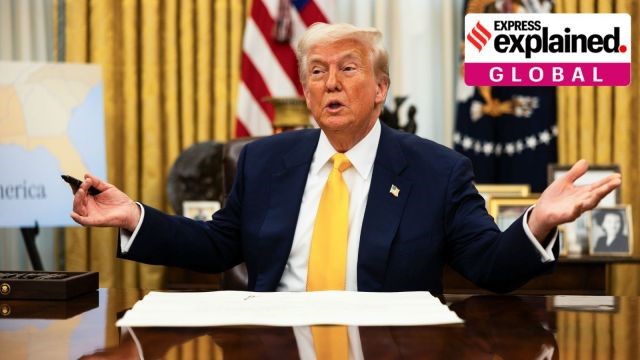H-1B Visa Overhaul and Its Implications for India–US Tech Relations

- 26 Sep 2025
In News:
The United States government has announced a sweeping change to its H-1B visa programme, introducing a $100,000 annual entry fee per visa effective September 21, 2025. Framed as a measure to protect American workers, this move has significant geopolitical and economic implications, particularly for India, whose citizens constitute over 70% of all H-1B beneficiaries annually.
What the New Rule Entails
Under the new proclamation signed by President Donald Trump, no petition filed for an H-1B worker outside the US will be approved unless the sponsoring employer pays the $100,000 fee upfront. Applications without proof of payment will be denied at consular processing. The rule applies to new entrants or those seeking re-entry after travel, though workers already in the US on valid H-1B status are exempt.
The order, valid for 12 months with scope for review, also directs the Department of Labor to raise wage levels for H-1B jobs and asks the Department of Homeland Security (DHS) to prioritise petitions offering higher salaries. A discretionary clause empowers DHS to waive the fee for specific individuals, companies, or entire industries if deemed in the “national interest.” However, the proclamation does not define which sectors qualify—though healthcare, defence, and critical technology are likely candidates.
Rationale and Political Context
Immigration has become a central and polarising issue in US politics. Public concern on immigration rose from 2.1% in 2012 to 14.6% in 2024 as a top voter priority. Trump’s political narrative has long linked immigration—both low-skilled and skilled—to job displacement and wage depression among the American working class. The H-1B programme, originally designed to attract top global talent in STEM (Science, Technology, Engineering, and Mathematics) fields, is now portrayed by nativist factions as a vehicle for outsourcing and wage suppression.
Data from the US Citizenship and Immigration Services (USCIS) indicate that nearly 70% of H-1B approvals for Indian workers in FY2023 were for salaries below $100,000, while the median US IT salary was $104,420.
Economic and Industrial Impact
The fee fundamentally alters the cost structure of hiring global talent. The new surcharge, in addition to existing statutory fees, transforms the H-1B from a skill-mobility programme into a premium channel accessible mainly to top-tier corporations or sectors granted exemptions.
Big Tech firms such as Amazon, Microsoft, Meta, Google, and Apple—already the largest H-1B sponsors—face millions in additional costs. Indian IT service giants like Infosys, TCS, Wipro, and HCL, who rely on the visa for onsite client delivery, are particularly vulnerable. The policy may push more work to offshore hubs in Bengaluru, Hyderabad, and Pune, reinforcing India’s role as a global back-office and development centre rather than an onsite service provider.
Startups, universities, and research labs, often operating on tight budgets, may scale back recruitment or face disruption to innovation and research projects if waivers are not granted.
Implications for India
For India, this measure could limit opportunities for young professionals transitioning from student visas (OPT) to H-1Bs, while families already in the US may face travel restrictions and uncertainty. However, it may also spur reshoring of tech investment to India, as multinational firms expand local operations to mitigate costs.
Conclusion
The $100,000 H-1B fee marks a decisive shift in US immigration policy—from selective reform to fiscal deterrence. While it may serve short-term political optics of job protectionism, it risks undermining America’s long-standing advantage in global innovation. For India, the challenge lies in turning this disruption into opportunity—by strengthening domestic tech ecosystems, skilling talent, and positioning itself as a preferred global innovation hub amid shifting international labour dynamics.
